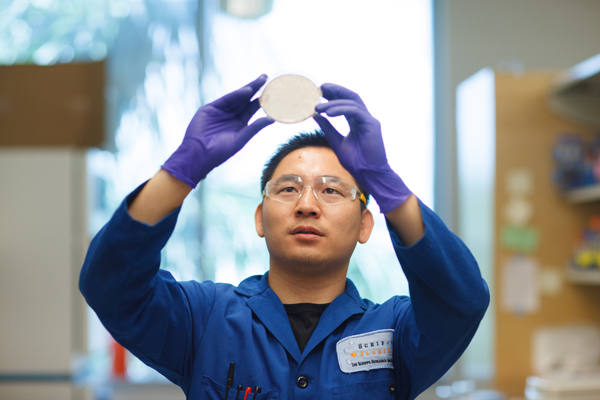WSCUC Standards of Accreditation

Scripps Research is committed to the education and training of the next generation of scientists while upholding the highest standards of integrity, transparency and accountability. This section demonstrates how our programs meet the standards prescribed by the WASC Senior College and University Commission (WSCUC).
According the WSCUC's 2013 Handbook of Accreditation: "The Standards of Accreditation consist of four broad, holistic statements that reflect widely accepted good practices in higher education. WSCUC institutions are diverse in terms of mission, character, and type. The Standards are broad enough to honor that diversity, respect institutional mission, and support institutional autonomy. At the same time, institutions must demonstrate that they are in substantial compliance with the four Standards and related Criteria for Review in order to become and remain accredited."
CRITERIA FOR REVIEW
"Thirty-nine Criteria for Review (CFR) are distributed across the four Standards. The CFRs under each Standard provide more specific statements about the meaning of the Standard. The CFRs are grouped under headings that identify major aspects of institutional functioning. The CFRs are cited by institutions in their institutional report, by peer reviewers in evaluating institutions, and by the Commission in making decisions about institutions. Many of the CFRs are cross-referenced to allow for ease in identifying related and connected CFRs."
The four WSCUC Standards are listed below, with links to webpages describing the corresponding Criteria for Review, along with detailed explanations of how the Scripps Research graduate program is addressing each criterion.
Standard 1: Defining Institutional Purposes and Ensuring Educational Objectives
The institution defines its purposes and establishes educational objectives aligned with those purposes. The institution has a clear and explicit sense of its essential values and character, its distinctive elements, its place in both the higher education community and society, and its contribution to the public good. It functions with integrity, transparency and autonomy.
Read More
Standard 2: Achieving Educational Objectives Through Core Functions
The institution achieves its purposes and attains its educational objectives at the institutional and program level through the core functions of teaching and learning, scholarship and creative activity, and support for student learning and success. The institution demonstrates that these core functions are performed effectively by evaluating valid and reliable evidence of learning and by supporting the success of every student.
Read More
Standard 3: Developing and Applying Resources and Organizational Structures to Ensure Quality and Sustainability
The institution sustains its operations and supports the achievement of its educational objectives through investments in human, physical, fiscal, technological and information resources and through an appropriate and effective set of organizational and decision-making structures. These key resources and organizational structures promote the achievement of institutional purposes and educational objectives and create a high-quality environment for learning.
Read More
Standard 4: Creating an Organization Committed to Quality Assurance, Institutional Learning and Improvement
The institution engages in sustained, evidence-based and participatory self-reflection about how effectively it is accomplishing its purposes and achieving its educational objectives. The institution considers the changing environment of higher education in envisioning its future. These activities inform both institutional planning and systematic evaluations of educational effectiveness. The results of institutional inquiry, research and data collection are used to establish priorities, to plan and to improve quality and effectiveness.
Read More

